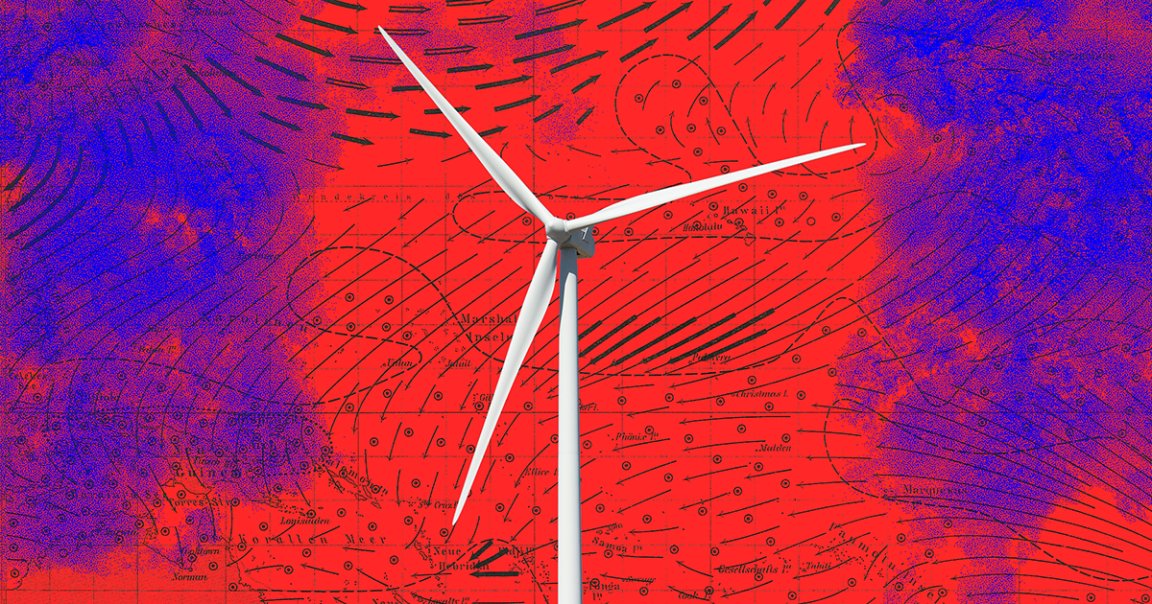
You can’t own the wind, but you can, apparently, “steal” it.
Enter “wind theft” — a phenomenon that wind farms across Europe are encountering as more of these renewable power plants pop up across the continent, the BBC reports. As powerful and vast as the currents of air that wrap our planet may be, it turns out the effects of hundreds of turbines tapping into them aren’t negligible.
“Wind farms produce energy, and that energy is extracted from the air. And the extraction of energy from the air comes with a reduction of the wind speed,” Peter Baas, a research scientist at Whiffle, a Dutch company specializing in renewable energy and weather forecasting, told the BBC. As a result, the gust behind each turbine is slower, creating a “wake effect.”
It perhaps puts a very slight blemish on wind’s image as a limitless source of clean energy: more care will have to be taken than simply propping up turbines in as many windy locations as possible. Offshore wind farms, for example, can create a wake that stretches more than 60 miles, according to the BBC — but in most cases, they’re no more than tens of miles long.
Still, the effect can add up. And so in the UK, a team of researchers are attempting to model how the thousands of wind farms that are planned to be built by the end of the decade would be impacted by the phenomenon.
“We have seen wake effects for years, and knew they happen,” project lead Pablo Ouro, a civil engineering researcher at the University of Manchester, told the BBC. For the UK to achieve net zero carbon emissions by 2030, “we need to have three times more capacity than we have now.”
“[Some of] these turbines are going to be operating very close to those that are already operating, so things are getting more and more crowded,” Ouro added. “So these wake effects are now starting to have more impact.”
To be clear, the wind isn’t in any danger of petering out as wind power expands. But the wake effect will create a huge economic headache, if it hasn’t already. It might be a pretty hard sell to companies that they should set up turbines downstream from someone else’s huge wind farm, for example, which could severely hinder the adoption of the technology.
“It’s very important for a developer to be able to project that the wind farm will produce a given amount of electricity for 25 or 30 years,” Eirik Finserås, a Norwegian lawyer specializing in offshore wind energy, told the BBC. A wake creating even just a tiny unexpected reduction in a wind farm’s energy output can make a wind farm not financially viable to an investor, he added.
There are already ongoing wind theft disputes between wind farm developers. In the North Sea and the Irish Sea, some European developers with offshore farms have demanded compensation for alleged acts of wind theft. As that plays out, a newly proposed bill in the UK would mean that wind farms wouldn’t be on the hook for compensating competitors for these wake losses.
It’d be remiss to let these questions hamper the expansion of wind power — but they have real-world economic implications.
“We need to understand this, we need to progress more on the modeling, so everyone is confident, because we need this amount of offshore wind to get to net zero,” Ouro told the BBC. “We have to deliver this.”
More on wind: China Installs Giant Wind Turbine Built to Harness Power of Hurricanes